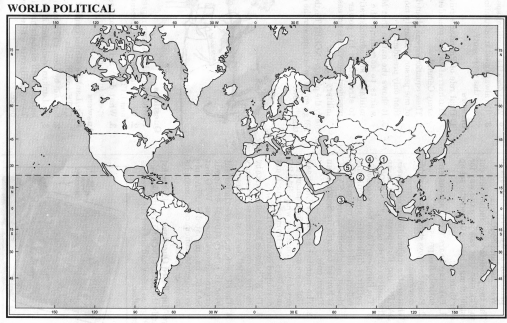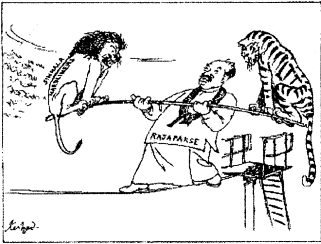Extra Questions of Class 12 Political Science Contemporary South Asia. myCBSEguide has just released Chapter Wise Question Answers for class 12 Political Science. There chapter wise Practice Questions with complete solutions are available for download in myCBSEguide website and mobile app. These Questions with solution are prepared by our team of expert teachers who are teaching grade in CBSE schools for years. There are around 4-5 set of solved Political Science Extra Questions from each and every chapter. The students will not miss any concept in these Chapter wise question that are specially designed to tackle Board Exam. We have taken care of every single concept given in CBSE Class 12 Political Science syllabus and questions are framed as per the latest marking scheme and blue print issued by CBSE for class 12.
Class 12 Political Science Extra Questions
Class 12 Contemporary South Asia Political Science
Class 12 – Political Science (Ch-5 Contemporary South Asia)
- When was SAFTA started?
- January 2002
- January 2004
- January 2000
- January 2003
-
Whose mediation resolved the ‘Indus River Waters Dispute’ between India and Pakistan?
-
Which political party dominates the political affairs of Maldives?
-
Mention any two objectives of SAARC.
-
Mention the names of member states of SAARC.
-
“Democracy in South Asia has expanded the global imagination of democracy”. Do you agree? Justify.
-
Mention some features of Indo-Bhutan relationship.
-
Highlight any two issues of cooperation as well as confrontation each between India and Bangladesh.
-
Explain India’s changing relationship with Pakistan.
-
Explain any five points of conflict between India and Bangladesh.
-
On a political outline map of world locate and label the following and symbolise them as indicate.
Questions
- A landlocked country with multi-party competition.
- Centrally located and shares borders with most South Asian Countries.
- Earlier the island had Sultan as head, now its a republic.
- A landlocked country with a monarchy. Country, where military has prevailed over democracy

-
Study the cartoon given below carefully and answer the follow ing questions :

- The given cartoon is related to which country?
- What is the full form of LTTE?
- What was the main demand of LTTE?
- Rajapakse is trying to perform which political act?
-
Assess the positive and negative aspects of India’s relations with Bangladesh. How can these relationship be improved?
Class 12 – Political Science (Ch-5 Contemporary South Asia) Answer
-
- January 2004, Explanation: It was started in 12th meeting of SAARC held in Islamabad.
- The World Bank resolved Indus River Water Dispute between India and Pakistan.
- Maldivian Democratic Party(MDP) dominates the political affairs of Maldives.
- Two objectives of SAARC are:
- To make the self reliance among the countries of South Asia.
- To quicken the economic growth, social progress and cultural development in the region.
- The seven founding member countries are India, Bangladesh, Bhutan, Nepal, Sri Lanka, Pakistan and Maldives. Afghanistan joined SAARC in 2007.
- The various countries in South Asia have experienced mixed record of democracies and the people also share an aspiration for democracy to be flourished not only in rich or developed countries but in developing and underdeveloped countries also which can be drawn from the examples of Nepal, Pakistan, Bangladesh, Bhutan and Maldives, because:
- Every ordinary citizen, rich or poor belonging to different religions view the idea of democracy positively and support the institutions of representative democracy.
- They prefer democracy over any other form of democracy and think that democracy is suitable for their country.
- There has been a hint of spread and demand for democracy as we have witnessed in the case of Nepal. Nepal has transformed politically from Monarchy to Democracy. It confirms the expansion of Democracy in South Asia.
- India enjoys a special relationship with Bhutan and does not have any major conflict with the Bhutanese government:
- Bhutanese monarch efforts to weed out the guerrillas and militants from north-eastern India that operate his country have been helpful to India.
- India is involved in big hydroelectric projects in Bhutan.
- The Himalayan Kingdom’s remains biggest source of development aid.
- Two issues for co-operation are as:
- Economic relations have been improved considerably in last ten years.
- Bangladesh is the part of India’s ‘Look East’ policy to link up South East Asia via Myanmar.
Two issues of confrontation are as:
- India and Bangladesh have differences over several issues including the sharing of the Ganga and Brahmaputra river waters.
- The India government has been unhappy with Bangladesh’s denial of illegal immigration to India, its support for anti Indian Islamic fundamentalist groups, and its refusal to allow Indian troops and not to export natural gas to India.
- Although Indo-Pakistan relations seem to be story of endemic conflict and violence, there have been a series of efforts to manage tensions and build peace under the various agreements:
- The two countries have agreed to undertake confidence building measures to reduce the risk of war.
- Social activists and prominent personalities have collaborated to create an atmosphere of friendship among the people of both countries.
- Leaders have met at summits to understand each other better and find solutions.
- A number of bus routes have been opened up between these two countries.
- In last five years trade between two parts of Punjab has increased substantially.
- Visas have been given more easily.
- The issues of tension (negative aspects) between India and Bangladesh are :
- Sharing of river waters of Ganga and Brahmaputra has been one of the biggest issues between India and Bangladesh.
- Indian Government is not happy with Bangladesh’s refusal to act on unlawful immigration to India. It seems that the government of Bangladesh is deliberately not trying to stop these activities.
- Bangladesh’s support to anti-Indian Islamic fundamentalist groups. Therefore there has been matter of conflicts between both countries.
- Bangladesh refused to allow Indian troops to move through its territory to the North-East region.
- Bangladesh refused to export natural gas to India and allow Myanmar to do so through its territory.
-
- Bhutan is a landlocked country having a multi-party system. It has China in the north and India in the south.
- India has a central location in South Asia. It shares its boundaries with Pakistan, Afganistan, Nepal, China, Bhutan, Myanmar, Bangladesh.
- The Maldives has transformed from Monarch to Democracy.
- Nepal is the country, recently transformed from monarch to Democracy.
- Pakistan is the country having history of military-intervention in politics.
-
- In Sri Lanka.
- The full form of LTTE is Liberation Tigers of Tamil Eelam (LTTE)
- Leading to the demand for secession by one of the regions.
- Raja Pakse is trying International actors, particularly the Scandinavian countries such as Norway and Iceland have been trying to bring the warring group back to negotiations. The future of the island hinges on the outcome of these talks.
- The issues of tension (negative aspects) between India and Bangladesh are:
- Sharing of river waters of Ganga and Brahmaputra.
- Indian Government is not happy with Bangladesh refusal to act on unlawful immigration to India.
- Bangladesh’s support to anti-Indian Islamic fundamentalist groups.
- Bangladesh refused to allow Indian troops to move through its territory to the North-East region.
The issues of cooperation (positive aspects) between both countries are :
- From the last decade, economic relations have been strengthened.
- India’s Look East Policy does involve Bangladesh that links South-East Asia via Myanmar.
- Cooperation is noticeable on the grounds of disaster management and environmental issues.
- Area of cooperation is being broadened by identifying areas of common threat and by responding sensitively to each other’s needs.
Chances for improvement in relationships: Today India and Bangladesh are partners of progress and development and our destinies are, in a sense, becoming increasingly intertwined. This is also a manifestation of India’s ‘Neighbours First’ policy that stems from the realisation that for India’s continued growth and development, the entire region needs to prosper.
Chapter Wise Extra Questions of Class 12 Political Science
Contemporary World Politics
- The Cold War Era
- The End of Bipolarity
- US Hegemony in World Politics
- Alternative Centres of Power
- Contemporary South Asia
- International Organisations
- Security in the Contemporary World
- Environment and Natural Resources
- Globalisation
Political Science-II

Test Generator
Create question paper PDF and online tests with your own name & logo in minutes.
Create Now
Learn8 App
Practice unlimited questions for Entrance tests & government job exams at ₹99 only
Install Now